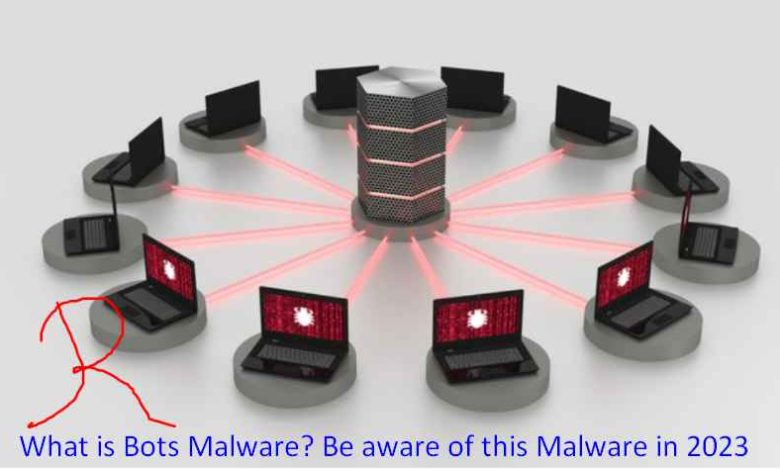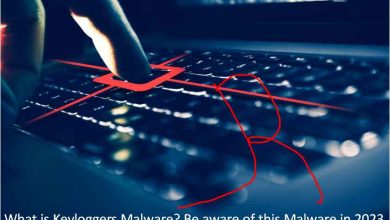

Introduction
In the digital age of 2023, where technology and the internet play a significant role in our lives, malicious actors continuously devise new ways to compromise systems and steal sensitive information. One such threat that has gained prominence is Bots Malware, which poses serious risks to individuals, businesses, and organizations. In this article, we will explore what Bots Malware is, how it operates, the signs of infection, distribution methods, its dangers, and how you can protect yourself from falling victim to this malicious software. Free Make Money Online
Understanding Malware
Malware, short for malicious software, encompasses a wide range of harmful programs designed to infiltrate and damage computer systems, servers, or networks. Its primary goal is to gain unauthorized access to sensitive data, disrupt operations, or control the infected device for illicit activities.
The Rise of Bots Malware
Bots Malware, also known as Botnets, has become increasingly prevalent in recent years. Bots are software applications that run automated tasks over the internet, usually performing repetitive actions at a scale that humans cannot achieve. Malicious actors use bots to control large networks of compromised devices, forming a botnet, which they can exploit for various purposes.
3.1 What are Bots?
Bots are software programs created to automate specific tasks, such as web crawling, data scraping, or interacting with users via chatbots. While some bots serve legitimate purposes, others are designed to operate without users’ knowledge, often for malicious intents.
3.2 How Bots Malware Operates
Bots Malware infects devices and connects them to a command-and-control (C&C) server, enabling attackers to control the botnet remotely. This centralized control allows them to launch large-scale attacks, distribute malware, or carry out coordinated actions, such as Distributed Denial of Service (DDoS) attacks…(Article Rewriter)(Plagiarism Checker)
Signs of Bots Malware Infection
Detecting Bots Malware early is crucial to prevent potential harm to your devices and data. Here are some signs to watch out for:
4.1 Unusual Network Traffic
If you notice a sudden increase in network activity or suspicious data transfers, it may indicate the presence of bots on your network.
4.2 High CPU and Memory Usage
Bots Malware often consumes significant system resources, leading to slow performance and unresponsive applications.
4.3 Strange Behaviors and Activities
Unexpected system behavior, such as unauthorized access to files or changes in settings, may be indicative of malware infection.
Common Distribution Methods
Bots Malware can enter your system through various vectors:
5.1 Phishing Emails and Attachments
Cybercriminals commonly use phishing emails to distribute malware. Opening infected attachments can install Bots Malware on your device.
5.2 Infected Websites and Downloads
Visiting compromised websites or downloading files from untrusted sources might expose your system to malware.
5.3 Social Engineering Attacks
Bots Malware can also spread through social engineering tactics, where attackers manipulate users into downloading infected files or clicking on malicious links.
The Dangers of Bots Malware
Bots Malware can lead to severe consequences for individuals and organizations:
6.1 Data Theft and Breaches
Attackers can use Bots Malware to steal sensitive information, including personal data, financial details, and intellectual property.
6.2 Financial Fraud
Bots Malware can facilitate fraudulent activities, such as unauthorized transactions or phishing scams.
6.3 Identity Theft
With access to personal information, cybercriminals can impersonate individuals, leading to identity theft issues.
Protecting Against Bots Malware
To safeguard yourself and your systems from Bots Malware, consider implementing these measures:
7.1 Keep Software and Systems Updated
Regularly update your operating systems, applications, and security software to patch vulnerabilities.
7.2 Use Robust Antivirus and Anti-Malware Programs
Deploy reliable antivirus and anti-malware solutions to detect and remove Bots Malware.
7.3 Educate Employees and Users
Train individuals about the dangers of clicking on unknown links or downloading suspicious attachments.
7.4 Secure Network Infrastructure
Implement strong network security measures, such as firewalls and intrusion detection systems.
Responding to Bots Malware Attacks
In the unfortunate event of a Bots Malware infection, take the following steps:
8.1 Isolate and Contain Infected Systems
Disconnect infected devices from the network to prevent further spread of the malware.
8.2 Conduct a thorough Malware Analysis
Analyze the malware to understand its capabilities and impact, assisting in devising an effective response plan.
8.3 Seek Professional Help
Engage cybersecurity experts to assist in the removal and recovery process.
The Future of Bots Malware
As technology advances, Bots Malware is likely to evolve and become more sophisticated. Vigilance and proactive cybersecurity measures will remain essential in the ongoing battle against this threat.
Conclusion
Bots Malware poses a significant risk to individuals and businesses in 2023. By understanding how it operates, recognizing signs of infection, and adopting proactive security practices, you can better protect yourself and your organization from falling victim to this malicious software.
FAQs
1. How does Bots Malware spread?
Bots Malware often spreads through phishing emails, infected websites, and social engineering attacks.
2. Can Bots Malware be removed manually?
While manual removal is possible, it is highly recommended to seek professional assistance to ensure complete removal and prevent any lingering threats.
3. What industries are most vulnerable to Bots Malware attacks?
Industries dealing with sensitive customer data, financial services, and healthcare are often targeted by Bots Malware attacks.
4. How can I report a suspected Bots Malware attack?
If you suspect a Bots Malware attack, report it to your organization’s IT security team or contact a cybersecurity professional immediately.
5. Is using a firewall enough protection against Bots Malware?
A firewall is essential, but it should be complemented with other security measures like antivirus software and employee training to provide comprehensive protection against Bots Malware.






